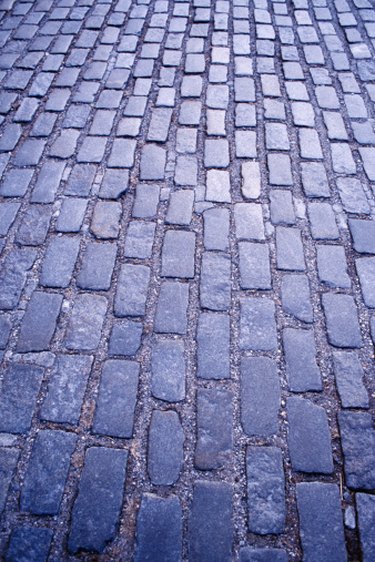
Bricks are hard blocks of kiln-baked clay used in building. Traditionally red, these strong, inexpensive building units take some skill to lay, but last for many years. Brick comes in a wide variety of shapes, sizes and types, each one suited for a particular type of building or paving. Choosing the correct type of red brick ensures a successful project, whether it's laying a wall, paving a sidewalk or building a home addition.
Common Brick
Video of the Day
Common brick is a highly porous brick used for basic construction. The cheapest kind of clay brick, this material may not be as attractive or strong as other specialty types of brick. Common brick is often used for parts of a project that won't be seen, such as interior fill or supports. When exposed to weather, common brick may require a surface sealer to prevent water seepage.
Video of the Day
Face Brick
These clay bricks are similar in weight and density to common brick. However, face bricks are more neatly cut and finished, producing a more attractive face for exterior work. They tend to be slightly denser than common brick and absorb water less readily, producing less cracking and wall movement in cold or wet climates. Face bricks cost slightly more than common bricks.
Pavers
Clay pavers look much like common or face bricks, but are fired at higher temperatures than conventional building bricks. This higher kiln temperature produces a denser material that won't break as easily when walked on or absorb as much moisture from the ground. Pavers are usually slightly larger than building bricks and work well for patios, walkways and other flat surfaces. Set them in sand, rather than mortar, to reduce problems from frost heave.
Fire Brick
This special brick is made to withstand intense heat without melting or cracking. Fire bricks are made using a special "fire clay" or clay with a higher sand and silica content than conventional bricks. Use fire bricks to line fireplaces, outdoor ovens and other structures that need to withstand significant amounts of heat.
Brick Veneer
Veneer bricks are usually thinner than the face bricks they resemble. Some brick veneer is only an inch or so thick, while other veneer bricks are closer to conventional size. In all cases, brick veneer is attached to a frame on the outside of the home, and provides no structural support. These bricks are chosen for their appearance, and according to Upfro Associates, are common in homes built after 1945.